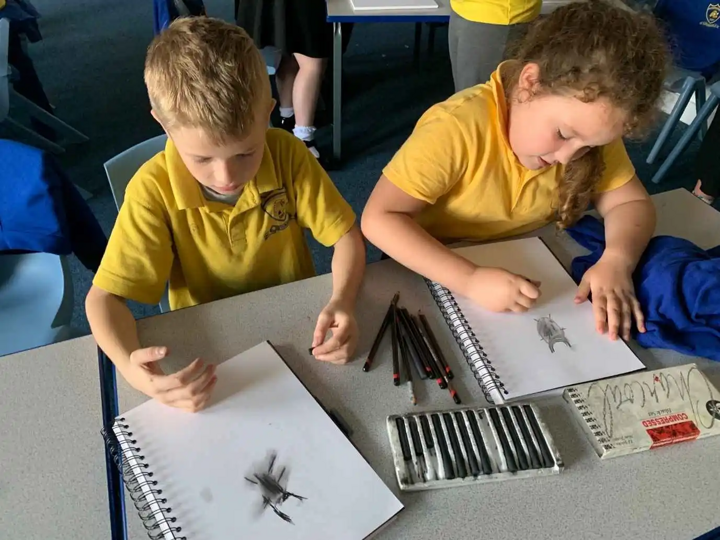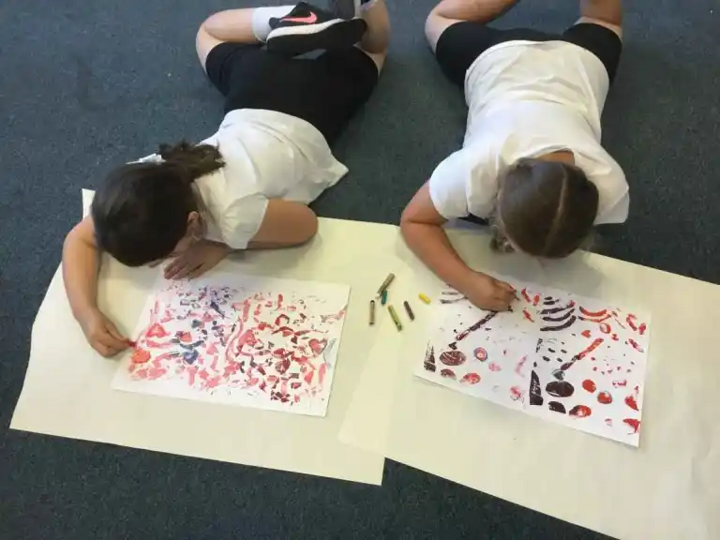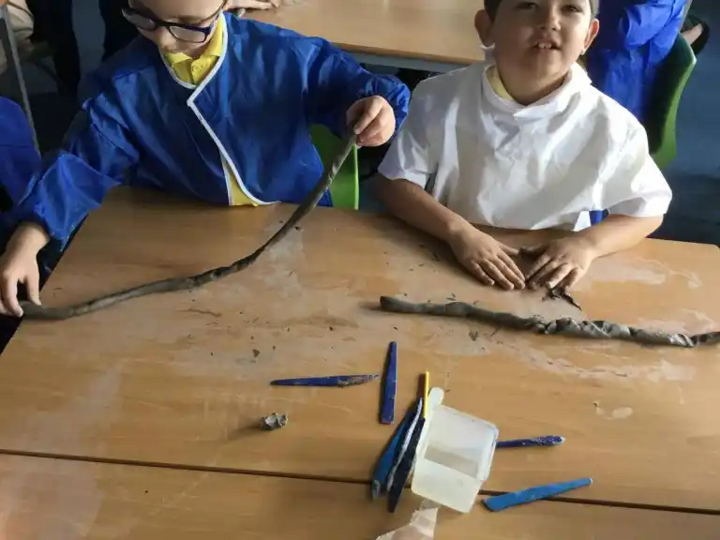
Art & Design
What makes a good artist?
- A good artist uses visual language skilfully
- A good artist draws confidently
- A good artist is patient
- A good artist knows about the ‘greats’
- A good artist is imaginative and creative
- A good artist selects appropriate materials
- A good artist takes inspiration from others
- A good artist reflects on their and others’ work
Vision
Art & Design is taught discreetly with links to the wider curriculum. It is broad and balanced and the children will:
- Use visual language skilfully
- Have the ability to communicate fluently
- Draw confidently and adventurously from observation, memory and imagination
- Explore and invent marks, develop and deconstruct ideas
- Have an understanding of artists, craft makers and designers throughout time
- Be independent and develop their creativity
- Select and use materials, processes and techniques skilfully
- Analyse and evaluate their work and that of others
- Understand the historical and cultural development
- Have an enjoyment of Art & Design
Intent
At Devonshire Primary Academy, every child:
- Produces work that is creative;
- Is capable of working with multiple medias and techniques;
- Evaluates and analyses theirs (and others) creative works;
- Is exposed to the life and works of great artists, craft-makers and designers;
- Understands the historical and cultural development of a variety of art forms.
We want our children have the very best start in life! We aim to inspire our children to grow up wanting to become book illustrators, costume designers, conservators, curators, architects or web designers and give them the best possible chance to succeed throughout their journey with us and beyond; so that they truly believe that they can achieve anything that they set their mind to.
Implementation
At Devonshire, Art is taught discreetly; although, many links have been established within the wider curriculum to deepen the pupils’ understanding. These lessons are taught in the school’s art room – which is extensively equipped with a range of tools and and media and labelled so that it is easily accessible to all staff and pupils.
The Art & Design curriculum ensures students’ learning meets National Curriculum expectations and gives the children a broad and balanced experience.
- Every child in EYFS thrives in the ‘Learning Landscape’ and is given opportunities to use the art gallery, crafty corner, easels (for fine and gross motor skills) and outdoor provisions to create nature art.
- Every child from Year 1 to Year 6 has a sketchbook in order to foster their sense of individuality and creativity.
- Every child is given the key vocabulary is reinforced and becomes familiar to our children as they progress through school.
- Every child is given the opportunity to observe, practise and evaluate a wide-range of different art forms and styles, influential artists and practical art skills by developing their ideas
- Every child maters techniques through the themes of drawing, painting, sculpture, collage, print, textiles and digital media.
- Every child takes part in in-depth class discussion, where they can explore how their art can share their mutual understanding with famous art from around the world
- Every child follows a clear progression of skills, which ensures all pupils are challenged in line with their year group expectations and are given the opportunity to build on their prior knowledge.
Impact
The teaching of Art & Design is enjoyed by the staff and children alike. Teachers have high expectations of our pupils and the pupils have high aspirations to learn and succeed. Children’s learning and progress can be seen through quality evidence, in their sketchbooks, their non-book based art work and individual year group floor books.
- Our children can use technical and artistic vocabulary accurately and are able to talk about their learning in a confident and knowledgeable way;
- Our children are constantly improving their knowledge of the world around them through artistic enquiry and can give their opinions about works of art, including their own;
- Our children demonstrate perseverance and resilience in continually evaluating and improving their own art practice.
What is a good artist?
- A good artist explores
- A good artist researches
- A good artist collaborates
- A good artist observes
- A good artist discovers
- A good artist creates
- A good artist takes risks
- A good artist has fun experimenting
Encouraging Your Child at Home
- You can find art everywhere! Art can be found in magazines, books, posters, a scene through a window, prints on clothing, wallpaper etc.
- Visit galleries and museums. Grundy Art Gallery in Blackpool is free to the public all year round.
- Create your own artwork. You can create art without the need for expensive art equipment. Try drawing in the sand on the beach, making patterns with leaves in the park, recycling wrapping paper or magazines to make sculptures, collecting junk-modelling materials to make 3D artwork. Remember, you don’t always need brushes and paints to make art.
- Interact with your children. Sit down together and talk to your children whilst they are drawing; ask questions and find out about their ideas.
- Praise! If your child has made something they are proud of; put it on display and show them that you too are proud of their creation.



